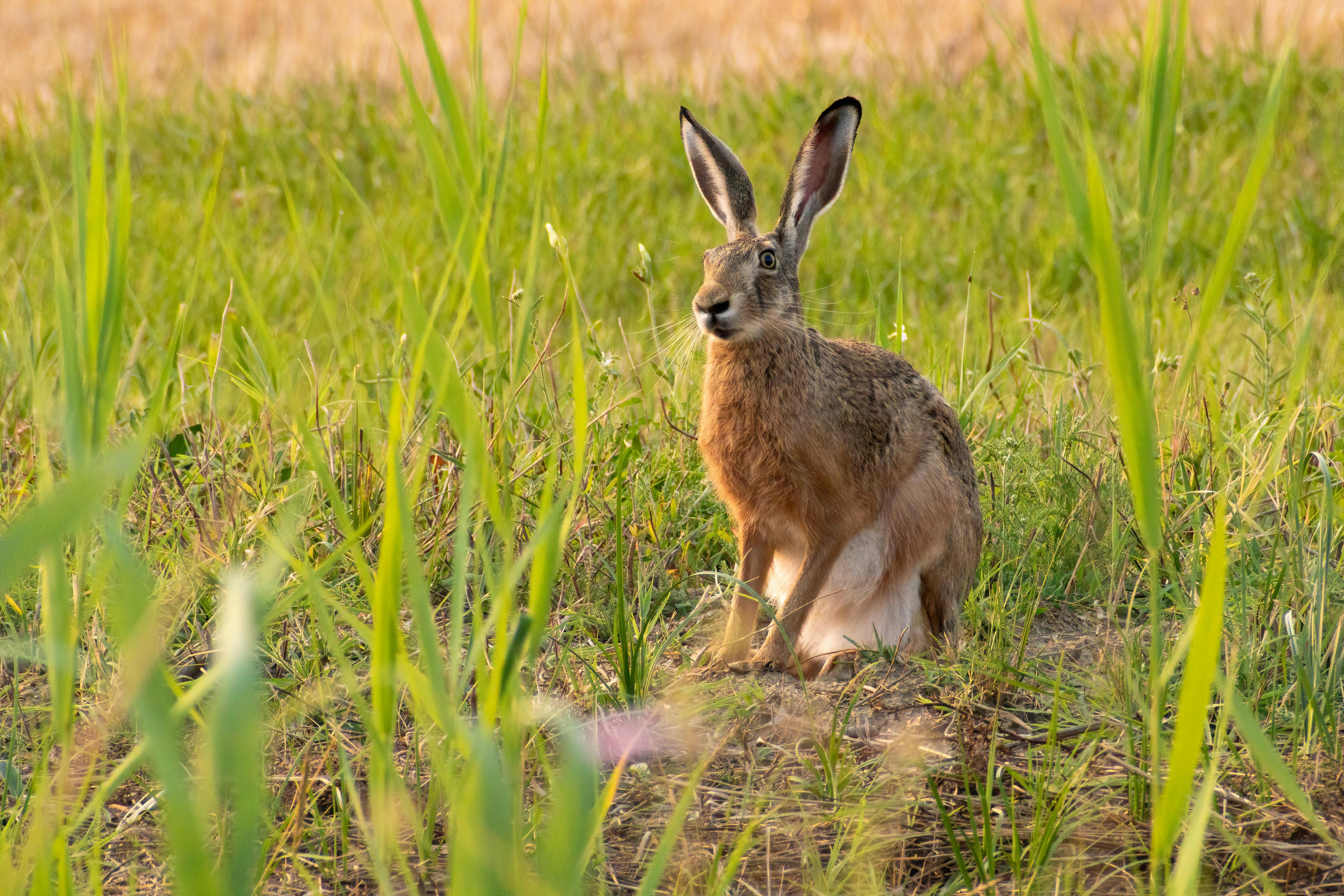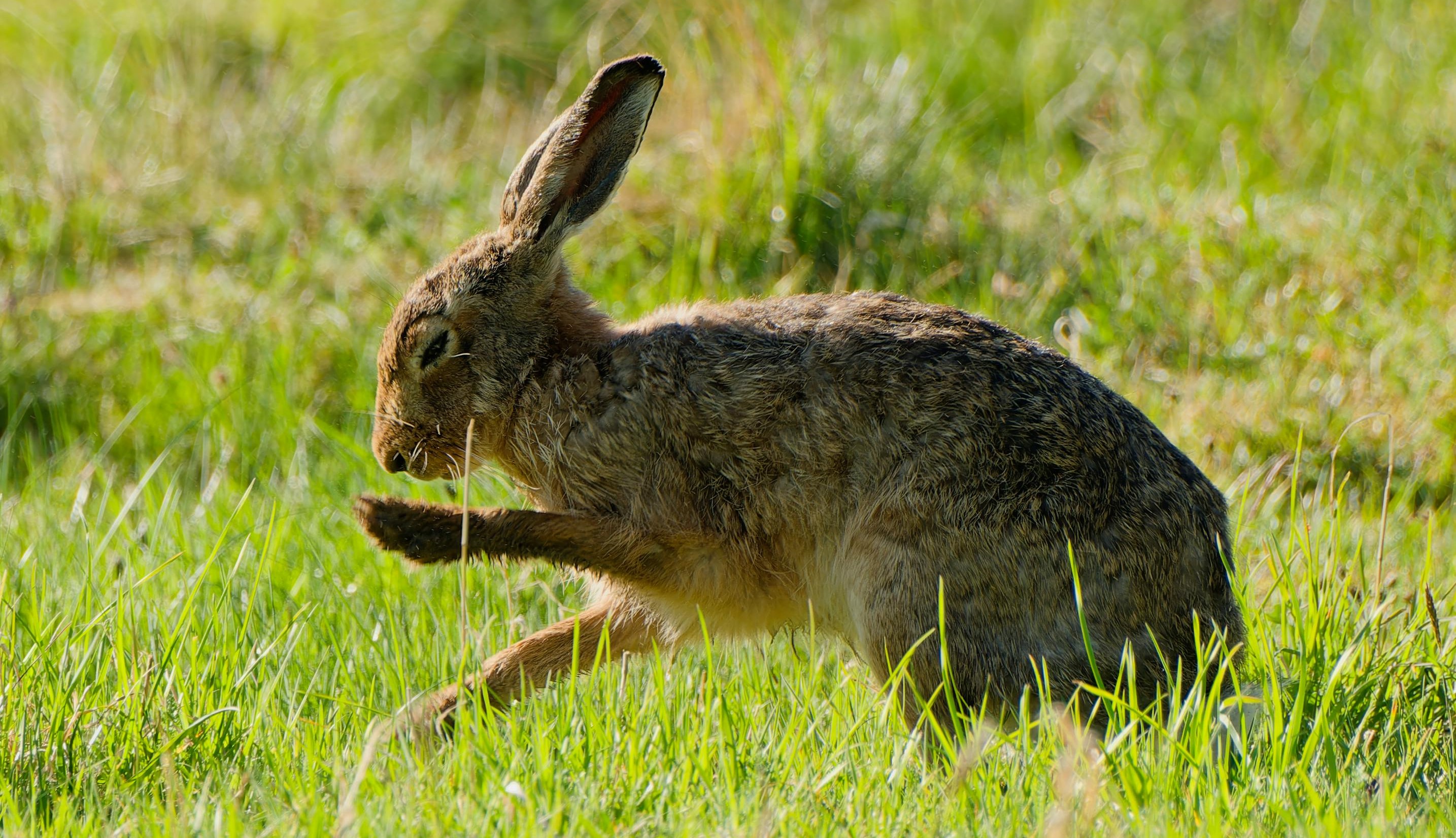The European hare (Lepus europaeus) is a mammal species belonging to the order Lagomorpha and the family Leporidae. In Türkiye, it is also known as the "wild hare," "steppe hare," or "Anatolian hare." It is widely distributed across Europe, Western Asia, and the Middle East. In Türkiye, it is naturally found in almost all geographical regions.

European Hare (Lepus europaeus) (Pexels)
Morphological Characteristics
This species has a medium-sized body and long hind legs. Its body length typically ranges from 50 to 70 cm, and it weighs between 2.5 and 7 kilograms. The ears are quite long with black tips. The tail is short, with a dark upper surface and a white underside. Its coat color does not change significantly with the seasons and usually appears in shades ranging from brown to yellowish-gray. In winter, the fur may become paler, but a fully white winter coat is not observed. There is a distinct gap between its teeth known as a diastema.
Habitat and Distribution
Lepus europaeus is a species capable of inhabiting a wide range of environments. It is commonly found in agricultural lands, steppes, grasslands, shrublands, and forest edges. It is particularly frequent in semi-open areas and edge ecosystems. It can live at elevations up to 2,500 meters above sea level. In Türkiye, it is widely distributed across the Aegean, Central Anatolia, Thrace, Southeastern, and Eastern Anatolia regions.
Behavior and Feeding Characteristics
The European hare is a nocturnal and crepuscular species, being most active during the night and twilight hours. During the day, it rests concealed in shallow depressions it digs in the ground, known as forms. Thanks to its highly developed senses, it is extremely alert to its surroundings. It avoids predators using its acute sense of smell, sight, and hearing. Its diet consists entirely of plant-based sources. It feeds on grasses, leaves, shoots, fruits, crops, tree bark, and buds. During winter, when food sources become scarce, it continues feeding on tree bark and dry grasses.
Reproduction and Development
Lepus europaeus reproduces several times a year. The breeding season begins in spring and extends into early autumn. The gestation period lasts approximately 42 to 44 days. A female gives birth to 1 to 4 offspring per litter. At birth, the young are furred and have open eyes. The mother leaves her young alone, returning only for nursing sessions. This strategy is a well-developed adaptation to reduce the risk of predation.

European Hare (Lepus europaeus) (Pexels)
Adaptation and Defense Mechanisms
During escape, it uses a zigzag running pattern to evade predators. It can reach speeds of 70–80 kilometers per hour over short distances. Its fur coloration has evolved to blend with its natural surroundings. The long ears play an active role in detecting and locating sounds from the environment. Its long, furry feet allow it to move quickly and steadily on soft terrain.
Conservation Status and Threats
Although the species is globally classified as “Least Concern,” there are local threats affecting its populations. Major threats include the intensification of agricultural activities, monoculture practices, pesticide use, habitat fragmentation, uncontrolled hunting, and roadkill. In Türkiye, the Central Hunting Commission has established hunting seasons and restricted areas to regulate hunting activities. The species also holds ecological significance by contributing to seed dispersal and supporting the sustainability of predator populations within ecosystems.


